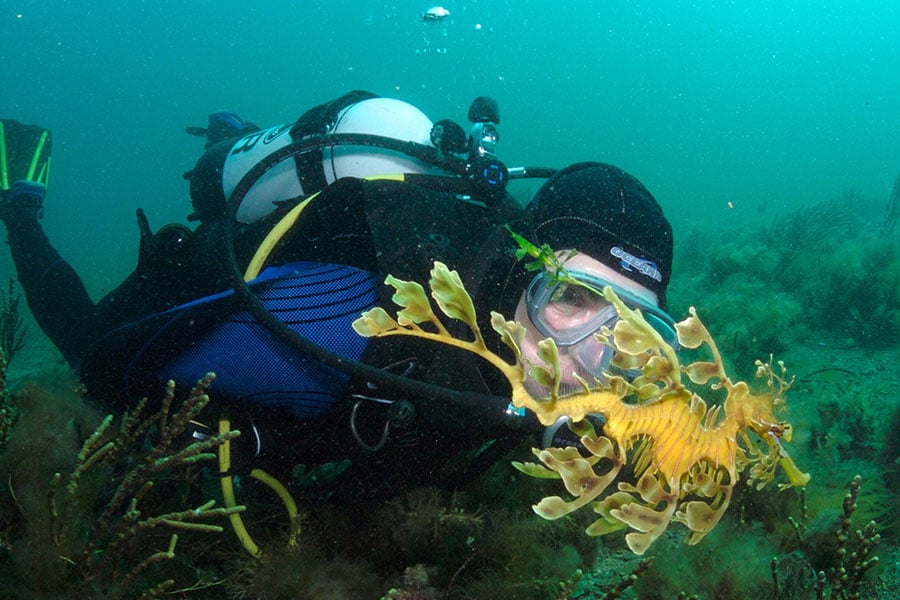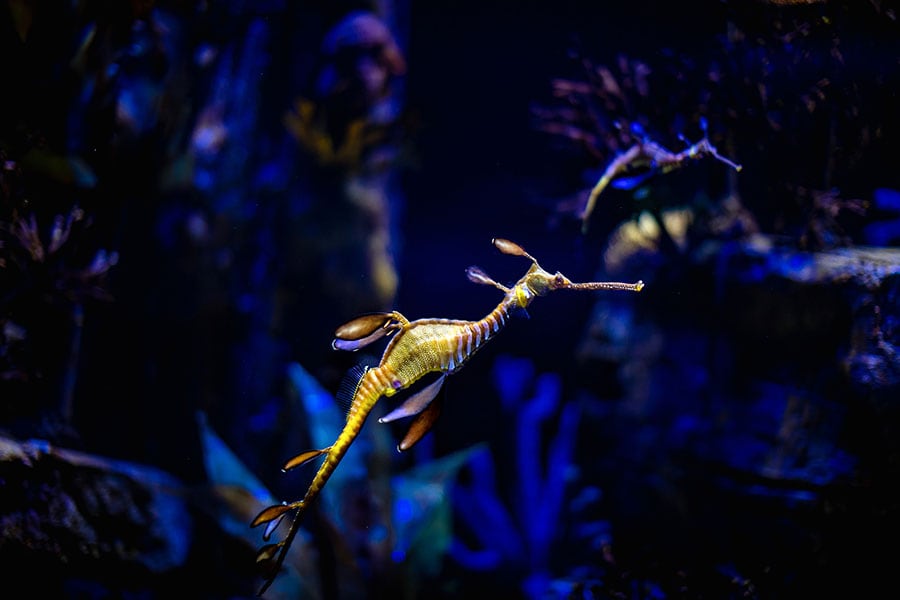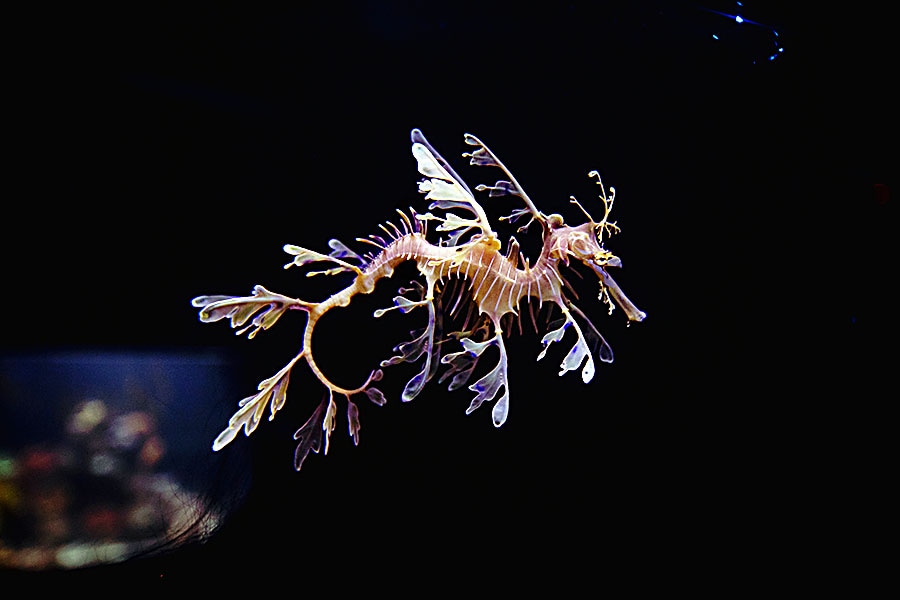
'Evolution gone crazy': What makes sea dragons so strange?
Bill Cresko at the University of Oregon studies sea dragon genetics to answer one fundamental question: He and his colleagues want to know "how the hell" these fish came to look the way they do
 A photo provided by Graham Short shows a diver conducting a close inspection of a weedy sea dragon in waters off south Australia. In the genomes of the bizarre fish that are related to sea horses, scientists have found certain key growth genes were missing. (Graham Short via The New York Times)
A photo provided by Graham Short shows a diver conducting a close inspection of a weedy sea dragon in waters off south Australia. In the genomes of the bizarre fish that are related to sea horses, scientists have found certain key growth genes were missing. (Graham Short via The New York Times)
Among the ocean’s menagerie of bizarre creatures, sea dragons stand out. Relatives of sea horses and pipefish, sea dragons have long narrow snouts that they use like a straw to suck up meals of microscopic crustaceans. Instead of scales, the fish are covered in bony armor, and their backbones are kinked. Like their sea horse cousins, male sea dragons gestate a female’s fertilized eggs in a pouch.
They come in two groups of species, leafy and weedy. “Leafies” have elaborate branching appendages that make them virtually indistinguishable from the floating seaweed in their Southern Australian habitats. Weedy sea dragons are more streamlined but are also more colorful, with purple stripes and yellow polka dots.
Bill Cresko at the University of Oregon studies sea dragon genetics to answer one fundamental question: He and his colleagues want to know “how the hell” these fish came to look the way they do.
“We’re just really fascinated by, ‘How can you have an organism that looks like that? What has changed in the genome?’” he said.
A study published in June in the Proceedings of the National Academy of Sciences tried to answer these questions. Researchers sequenced the genomes of leafy and weedy sea dragons and compared them with other fish.
©2019 New York Times News Service









